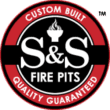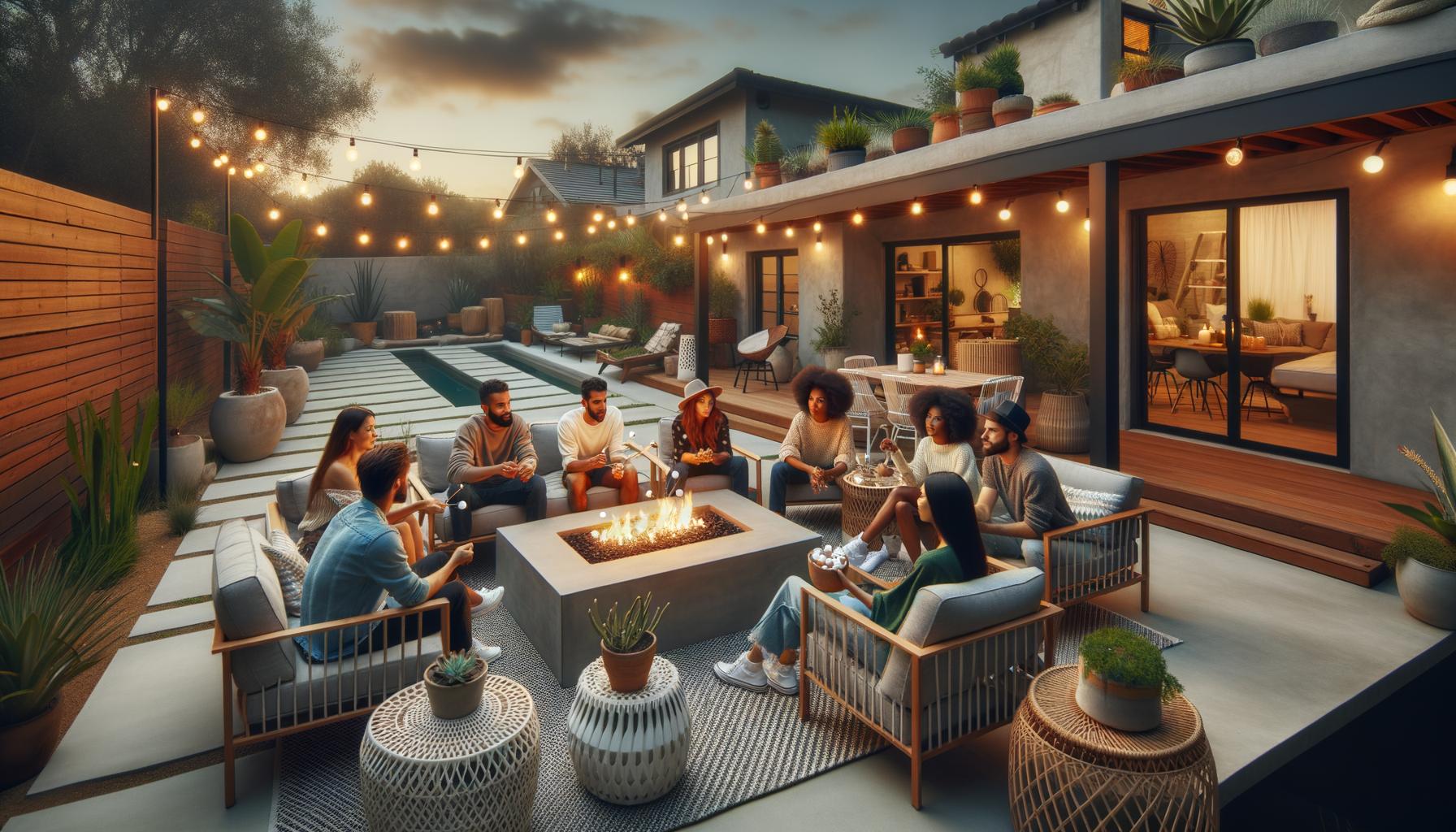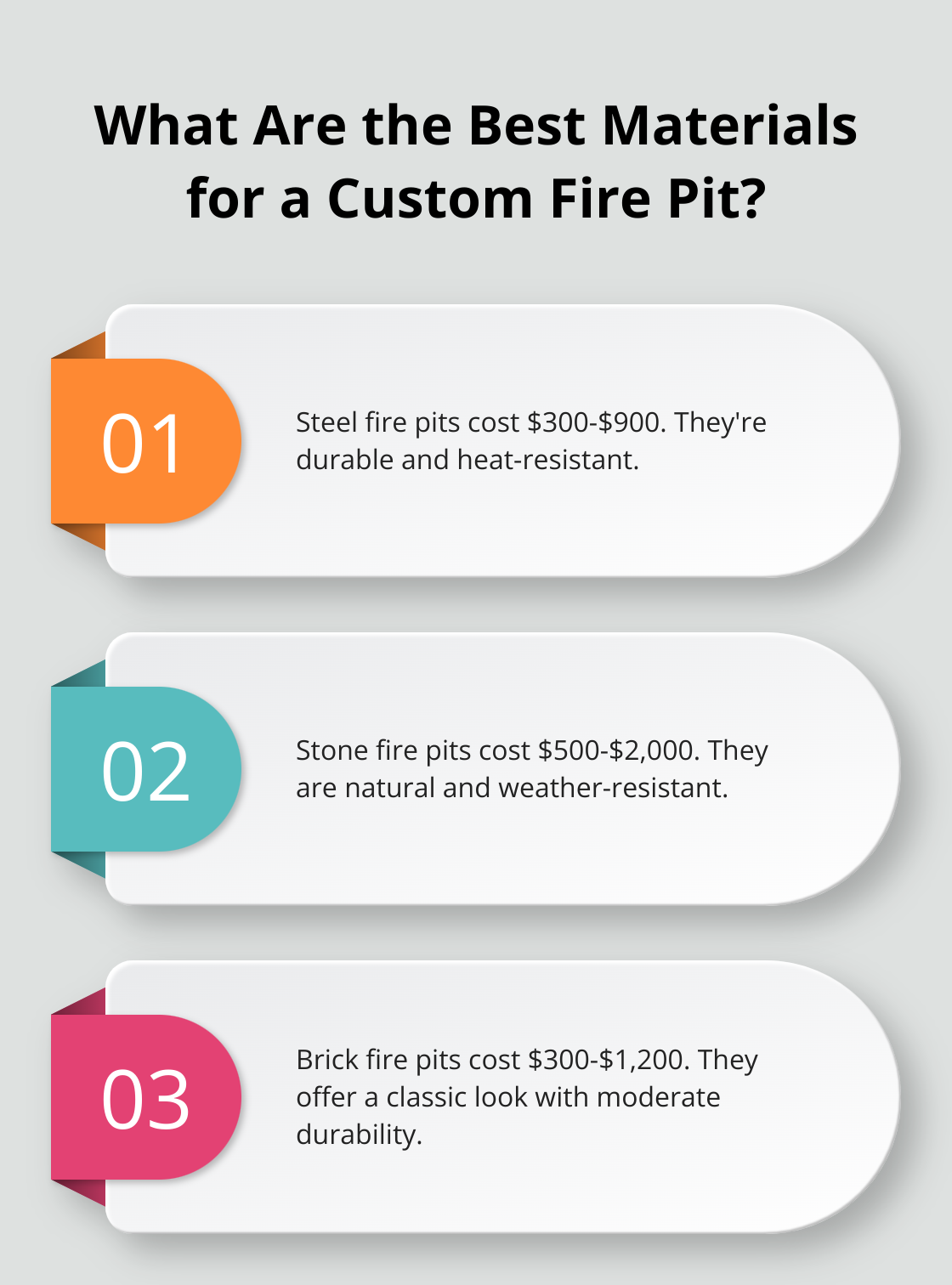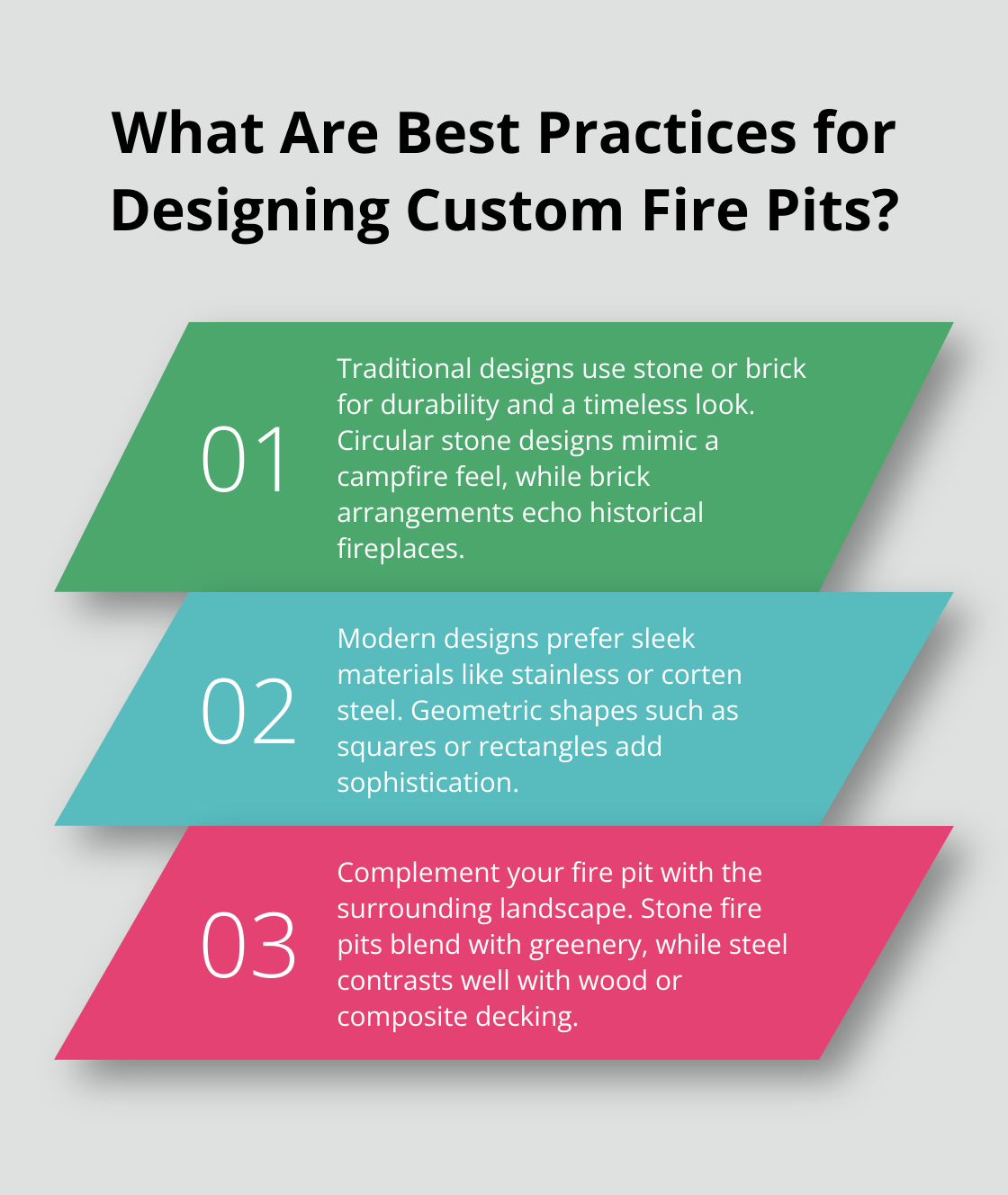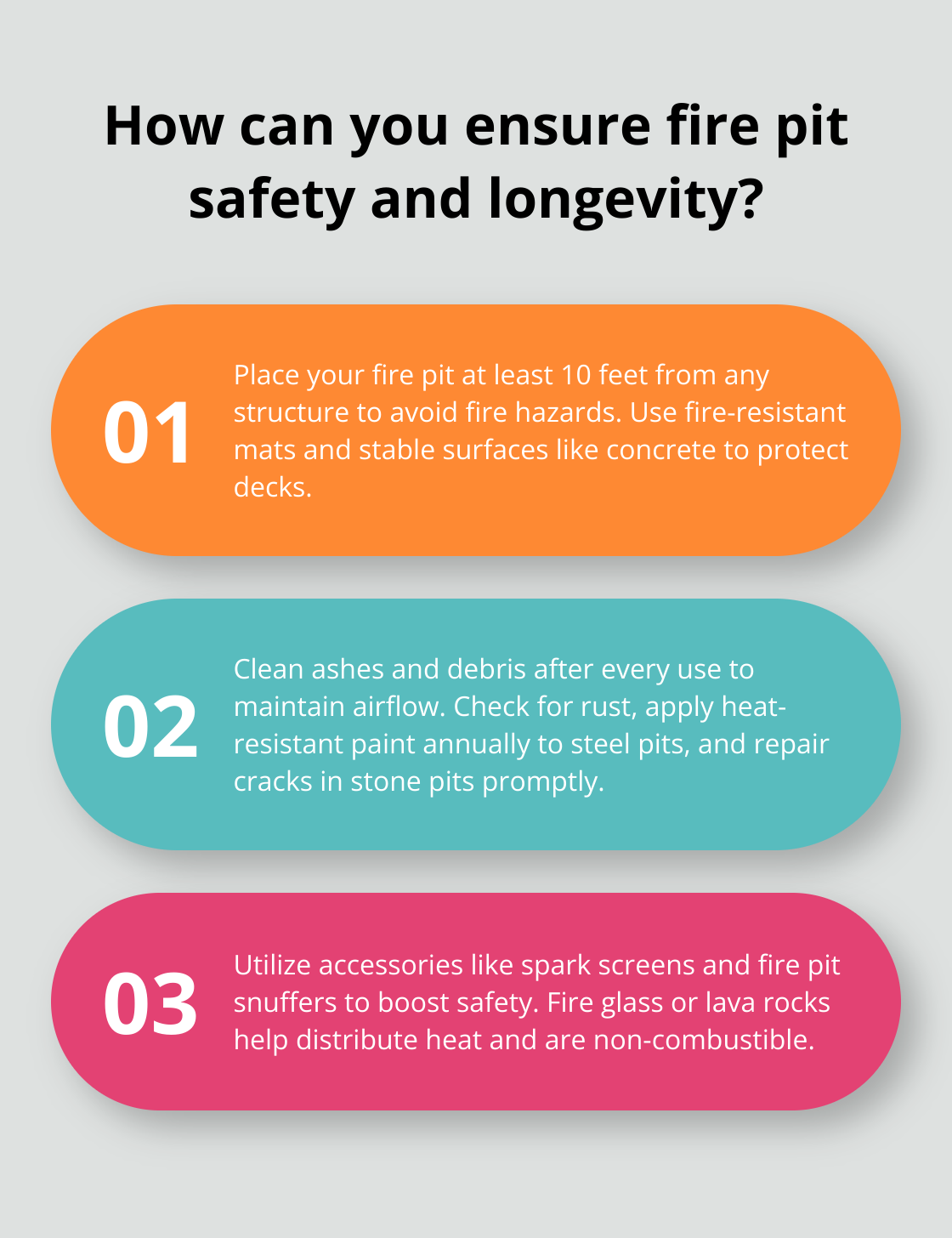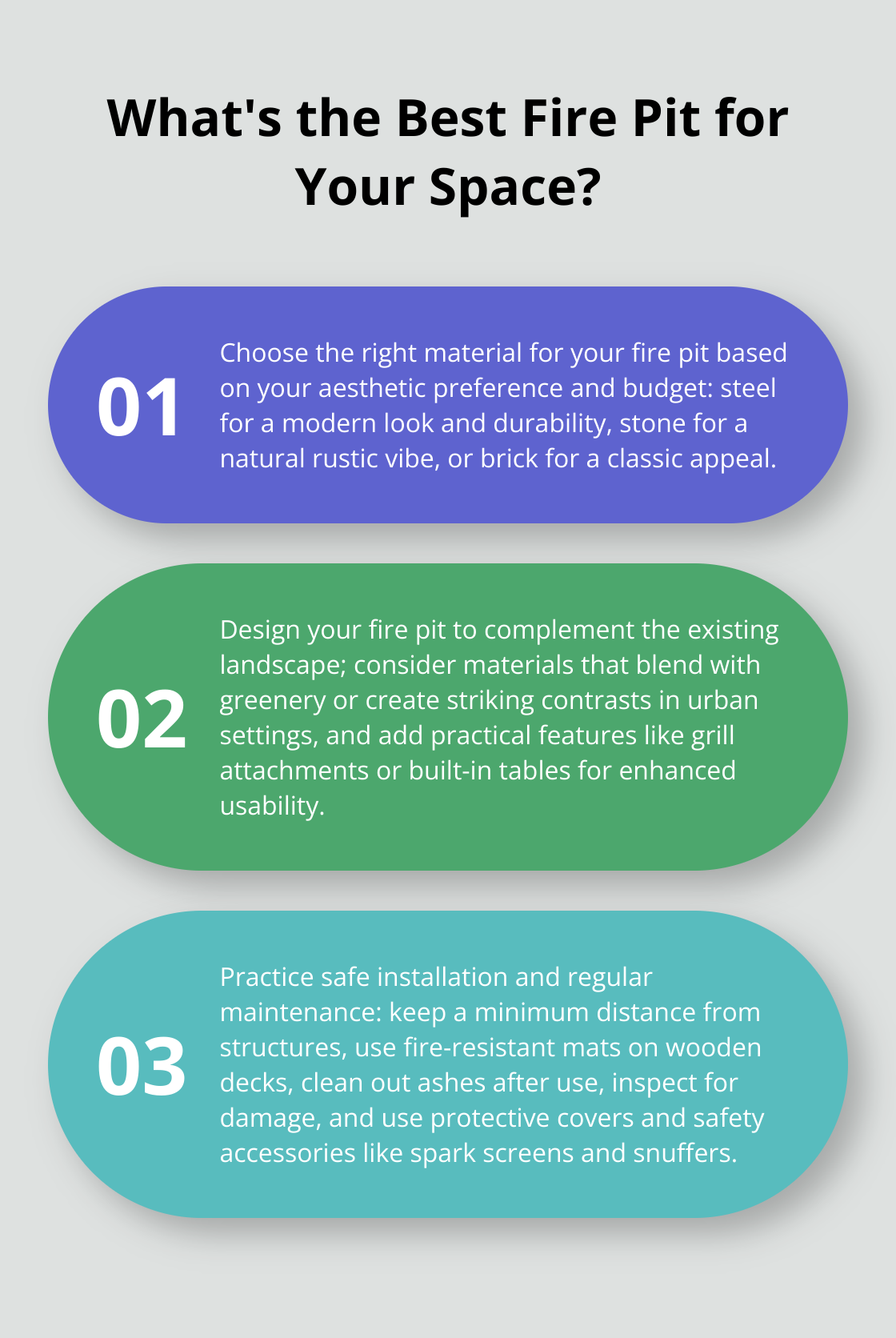
Cooking over an open fire is not only a unique culinary experience but also a skill that connects us with nature.
We at S&S Fire Pits are passionate about helping you master this art.
From choosing the right firewood to selecting essential tools, our practical tips will guide you through every step.
Which Firewood is Best?
Choosing the right firewood is essential for a successful open-fire cooking experience. Different types of wood offer various flavors and burn characteristics. For optimal cooking, use hardwoods like oak, hickory, and maple. These woods burn longer and produce steady, high heat. Oak is known for its slow burn and consistent heat, making it perfect for cooking meats evenly. Hickory adds a rich, smoky flavor ideal for grilling.
Proper Seasoning and Storage
Firewood must be properly seasoned to ensure it burns well and minimizes smoke. Seasoned wood is wood that has been dried to reduce its moisture content. Freshly cut wood, or green wood, contains up to 50% water, making it difficult to light and producing excess smoke.
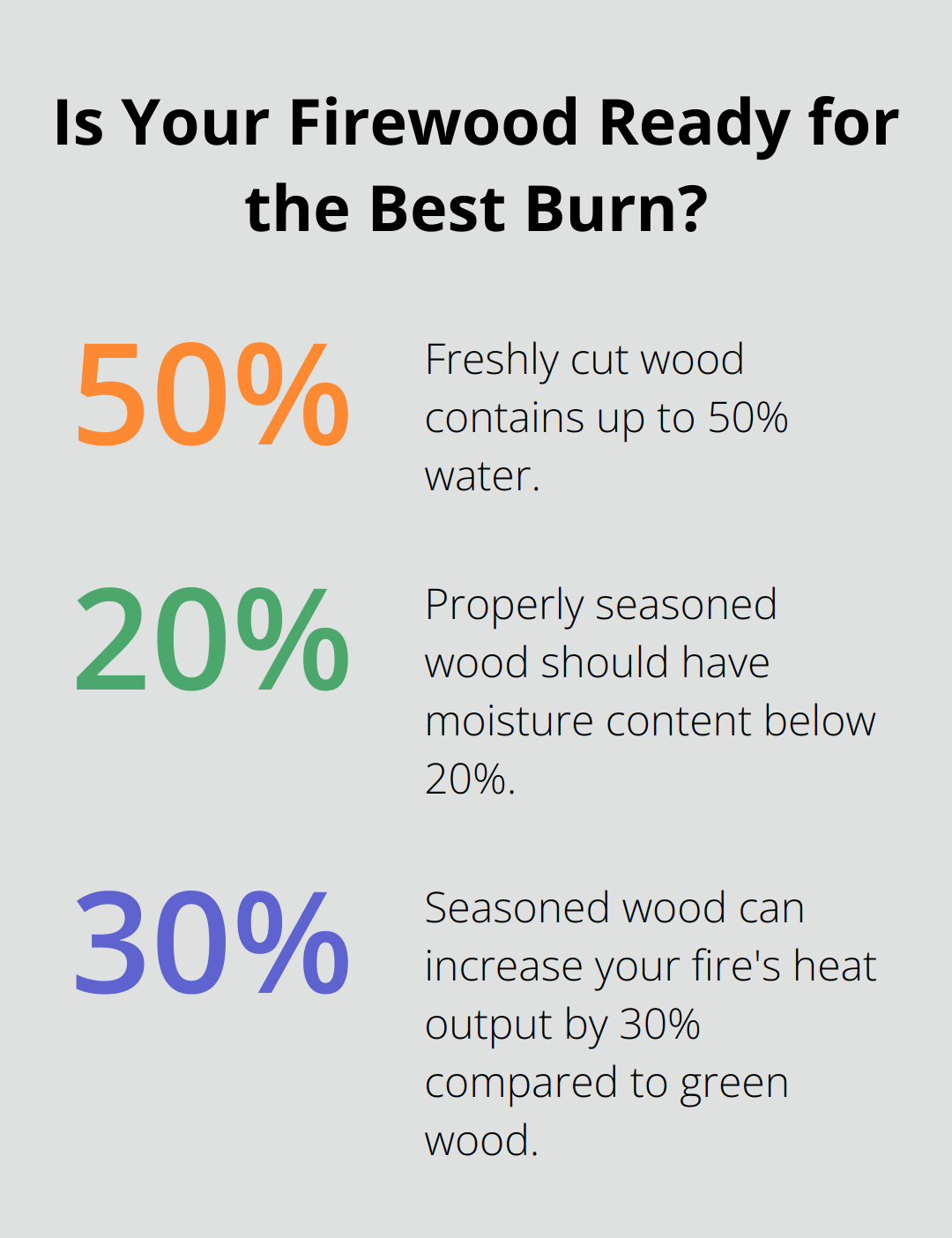
To season firewood, split it into smaller pieces and stack it in a dry, well-ventilated area. The wood should be off the ground to prevent moisture absorption. On average, firewood requires six months to one year to season fully, depending on the wood type and climate. Properly seasoned wood should have moisture content below 20%, which can be measured using a moisture meter.
Safety Precautions
Handling firewood safely is crucial to avoid injuries and accidents. Always wear gloves to protect your hands from splinters and cuts. When splitting or moving large logs, use proper lifting techniques to avoid strain. Additionally, store firewood away from your home to prevent pests from entering and to reduce fire hazards.
Burning seasoned wood is not only safer but also more efficient. On average, seasoned wood can increase your fire’s heat output by 30% compared to green wood. If you’re interested in more details on wood selection, check out best wood to burn.
Maintaining a safe cooking environment includes keeping water or a fire extinguisher nearby to manage unexpected flare-ups. Adhering to these precautions ensures a pleasant and secure cooking experience.
What Tools Do You Need?
Must-Have Cooking Utensils
Proper utensils are vital for successful open-fire cooking. Essential items include long-handled tongs, fire-resistant gloves, and a spatula designed for high heat. Long-handled tongs let you maneuver food without getting too close to the flames, increasing safety. Fire-resistant gloves protect your hands while adjusting logs or handling hot cookware. A durable spatula helps manage thicker cuts of meat and larger food portions efficiently.

Investing in tools like a meat thermometer is also practical. Overcooking or undercooking not only affects taste but poses safety concerns. A reliable meat thermometer ensures your food reaches safe internal temperatures. Studies by the USDA highlight that using thermometers reduces foodborne illnesses by 23%.
Ideal Cookware
Choosing the right cookware makes a difference. Cast iron is the preferred material because it retains and distributes heat evenly. It is perfect for Dutch ovens, skillets, and griddles used over open flames. A stainless steel grill grate is another essential for open-fire grilling, allowing you to cook meats and vegetables directly over the coals.
Use cast iron cookware for making stews, soups, and one-pot meals, whereas a grill grate is ideal for searing meats and grilling vegetables. When camping, multi-purpose cookware helps. A Dutch oven, for instance, can serve as a pot, pan, and even bakeware when properly prepped with coals on top and bottom.
Enhancing Cooking with Accessories
Maximize your fire pit’s culinary potential with accessories. A rotisserie attachment is excellent for even roasting meats. Adjustable grill grates offer flexibility in height, providing precise control over cooking temperatures. Cooking grates with handles make it easier to adjust and move your cooking surface.
For example, using a heat deflector can help manage flare-ups and distribute heat more evenly. This is particularly useful when cooking fatty cuts of meat that tend to drip grease. Another practical accessory is a coal shovel. It allows you to move and manage hot coals without disturbing the main fire.
Maintaining and organizing your tools is equally critical. Storing them in a dedicated fire pit tool kit keeps everything in one place, making setup and cleanup more efficient. To learn more about must-have fire pit tools, visit our tool sets guide.
Prioritizing quality cookware and essential accessories will elevate your open-fire cooking, making it safer and more enjoyable.
How to Cook Different Foods
Cooking different types of foods over an open fire requires distinct techniques to maximize flavor and texture. Mastering these can lead to consistent success whether grilling meats, roasting vegetables, or preparing desserts.
Best Practices for Grilling Meat and Fish
When grilling meat and fish, controlling heat is crucial. Meats benefit from a two-zone fire setup, which involves creating a hot zone for searing and a cooler zone for finishing. Start by searing the meat over direct heat to get a well-charred exterior, then move it to indirect heat to cook through without burning. For fish, a well-oiled grill grate and quick cooking over direct heat works best to prevent sticking and breakage.
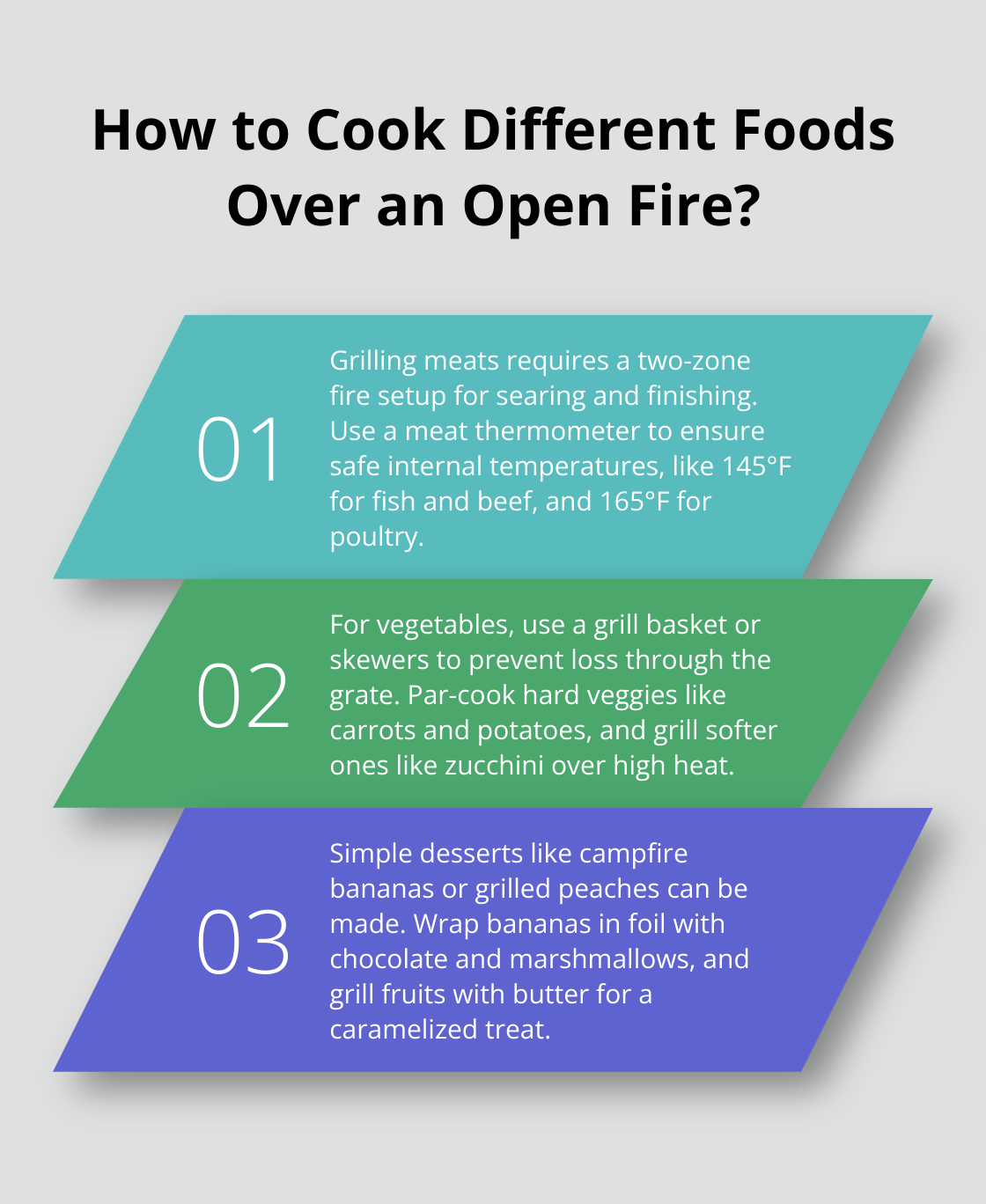
A meat thermometer ensures internal temperatures are safe. For example, the USDA recommends 145°F for fish and whole cuts of beef, and 165°F for poultry. Marinating meats before grilling enhances flavor and tenderness; acidic components in marinades, like lemon juice or vinegar, help break down proteins.
Techniques for Cooking Vegetables and Sides
Cooking vegetables over an open fire can elevate their natural sweetness and add a smoky flavor. Use a grill basket or skewers to prevent smaller pieces from falling through the grate. Hard vegetables like carrots and potatoes should be par-cooked before grilling to ensure they are tender inside when charred on the outside. Softer vegetables like bell peppers, zucchini, and mushrooms benefit from quick grilling over high heat.
For sides like corn on the cob, cooking directly on the coals with the husk on traps moisture, resulting in a juicy, smoky treat. Wrapping sliced vegetables in foil packets with a bit of oil and seasoning is also effective, creating a steamed effect that intensifies flavors. Avoid overcooking to retain their crunch and nutrients.
Simple Desserts Perfect for Open Fire Cooking
Desserts over an open fire can be surprisingly simple and delicious. One excellent choice is campfire bananas. Slice a banana lengthwise, stuff it with chocolate and marshmallows, wrap it in foil, and place it on the coals. In fifteen minutes, you’ll have a gooey, sweet treat.
Another favorite is grilled fruit. Peaches, pineapples, and apples take on a caramelized flavor when grilled. Brush them lightly with oil or melted butter, and cook over medium heat until soft and slightly charred. Adding a sprinkle of cinnamon or a scoop of vanilla ice cream can turn these grilled fruits into a gourmet dessert.
Mastering grilling techniques for meat, vegetables, and even desserts opens endless possibilities for open-fire cooking. For more on grilling steak, check out our tips on grilling.
Wrapping Up
Cooking over an open fire connects us with nature and offers a unique culinary adventure. Here are essential tips for making your experience successful. First, choose hardwoods like oak and hickory for their steady, high heat and flavor. Ensure your firewood is properly seasoned to avoid excess smoke and achieve optimal burning. Safety is key, so always handle firewood with care, use gloves, and store it correctly.
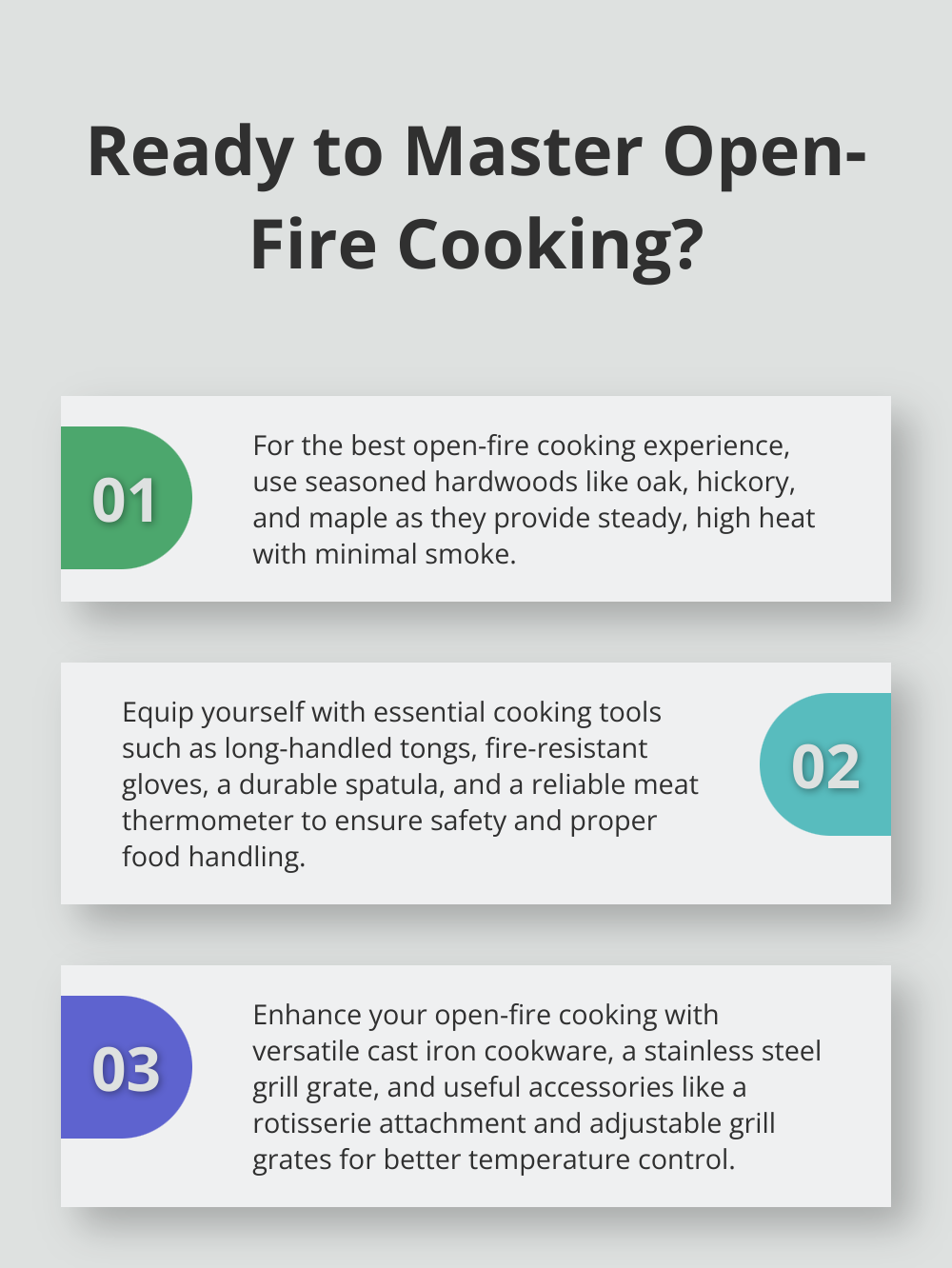
Equip yourself with the right tools. Essential utensils such as long-handled tongs, fire-resistant gloves, and a reliable meat thermometer ensure safe and effective cooking. Invest in quality cookware like cast iron for even heat distribution. Accessories like adjustable grill grates and heat deflectors enhance control over your cooking.
Master different cooking techniques based on the food. Grilling meat requires a two-zone fire setup, while vegetables benefit from tools like skewers or grill baskets. Simple desserts like campfire bananas and grilled fruit can add a sweet finish to your meal.
Experimenting with different recipes and techniques can elevate your open-fire cooking experience. Enjoy the process and embrace the versatility that cooking over an open flame offers.
Always prioritize safety. Keep a water source or fire extinguisher handy, and never leave your fire unattended. Properly extinguish your fire, ensuring it is completely out before you call it a night.
For a quality fire pit that enhances your outdoor cooking, check out S&S Fire Pits. Our handmade solid steel fire pits guarantee a unique and durable addition to your outdoor living space. Embrace the joy of open-fire cooking with confidence and creativity!
